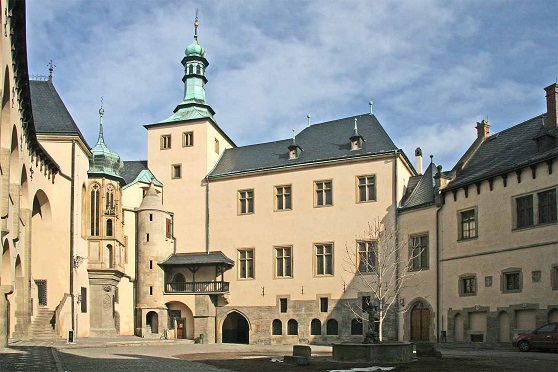
Kutná Hora continues the reconstruction of the Vlašský dvůr
 |
Kutná Hora - The Vlašský dvůr in Kutná Hora has looked like a construction site for several months now. Since summer, visitors have encountered workers in helmets, the building is filled with noise, and part of the former mint is inaccessible. Although the work is in full swing, city councilors are still approving contracts for some projects, such as the restoration of the council bench, Mayor Josef Viktora (ANO) told reporters today.
"These are now such specific matters that they must be tendered individually. It would be difficult to put them out to tender as part of the entire construction," Viktora stated. However, everything must be consulted with the grant provider to ensure that the conditions of the program are not violated. The extensive renovation of the building, which houses the minting exhibition and the town hall, will cost 123 million crowns. Of that, 89 million will be covered by a European grant from the Integrated Regional Operational Program. "Work is being done during operations and there is an effort to ensure that the regular functioning of the office is not affected in any way," the mayor said.
Some officials have moved to temporary locations due to the construction, and Viktora had to vacate his original office as well. He is expected to return there before the autumn elections, but he himself does not believe it much. The builders are currently installing new floors and have restored the windows. In another office, they discovered old frescoes beneath the ceiling plaster. The conservators wish to restore them, which will slow down the progress of the work a bit.
In the former medieval mint, new water, electricity, and sewage installations are needed. There are also plans to make new spaces accessible to the public and to enhance the overall attractiveness of the building. Everything is to be completed by the end of next year, and the total costs also include modifications to the adjacent park.
The Vlašský dvůr is a complex of buildings from the 13th and 14th centuries, and its history is linked to a rich silver deposit. It was likely named after the Wallachian masters whom the king summoned from Florence.
The English translation is powered by AI tool. Switch to Czech to view the original text source.
0 comments
add comment
Related articles
0
22.11.2020 | In Kutná Hora, a extensive restoration of the Vlašský dvůr is coming to a close
0
14.01.2019 | Workers continue the reconstruction of Vlašský dvůr in Kutná Hora
0
12.01.2018 | Kutná Hora will announce a tender for the reconstruction of the Vlašský dvůr
0
22.01.2017 | Reconstruction of the Vlašský dvůr in Kutná Hora will cost 120 million CZK
0
06.01.2017 | Kutná Hora received a grant for the renovation of the Vlašský dvůr
0
23.09.2006 | The Kutná Hora Town Hall has completed the renovation of the Vlašský dvůr courtyard











